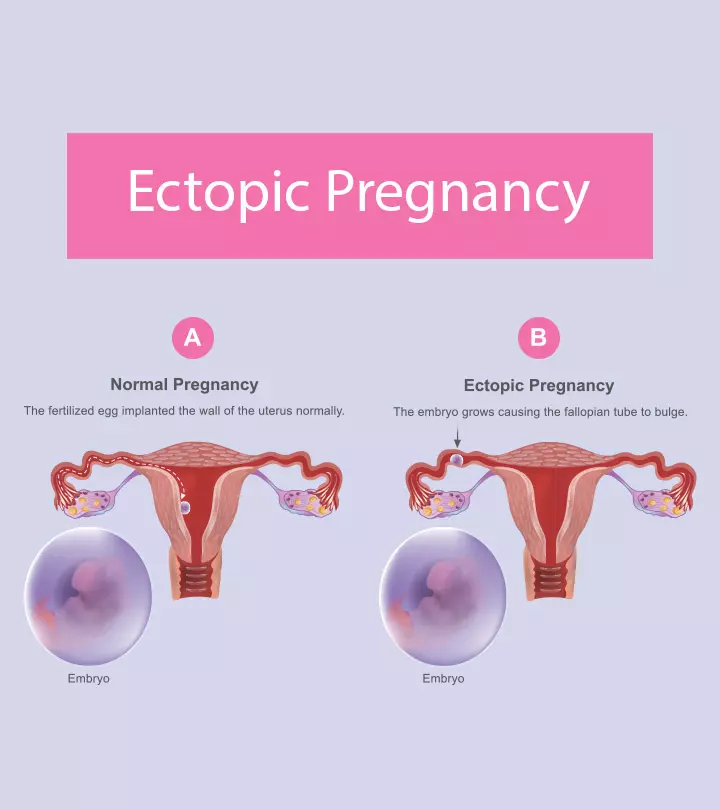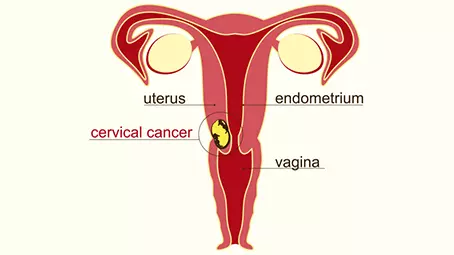
Image: Shutterstock
Hydrocephalus in babies is a condition where the baby’s brain swells dramatically due to the retention of excess cerebrospinal fluid, resulting in rapid increase in head circumference. This unsettling swelling may potentially harm the brain in the long term. Surgery, followed by regular check-ups, is the only treatment for hydrocephalus in newborns.
Most parents may have little knowledge about the illness and the underlying causes. This post discusses infant hydrocephalus, including its symptoms, prognosis, and treatment options.
Key Pointers
- Hydrocephalus in children is a condition in which the brain swells due to the accumulation of extra cerebrospinal fluid.
- Hydrocephalus may be caused by congenital conditions such as spina bifida, maternal infections, brain cysts, infections, and head injuries.
- Vomiting, enlarged head, poor feeding, seizures, and irritability are among the symptoms of hydrocephalus.
- Hydrocephalus treatment in babies includes surgery to eliminate extra fluid and frequent check-ups to monitor the condition.
What Is Hydrocephalus In Babies?
Hydrocephalus is a condition where excess cerebrospinal fluid remains in the cavities of the brain, causing the brain and skull to swell. Cerebrospinal fluid, or CSF, is a clear liquid that circulates within the nervous system to provide nourishment and cushion the brain and spinal cord (1).
The fluid is produced by a part of the brain called the choroid plexusiA complex network of capillaries in each ventricle of the brain that produces the cerebrospinal fluid from where it moves into a series of channels within the brain called ventriclesiA communicating network of cavities filled with cerebrospinal fluid (2). From the ventricles, the fluid circulates to parts of the nervous system.
The ventricles act as a center for transfer of any surplus CSF into the bloodstream. When ventricles fail to drain the fluid, it accumulates in the brain, causing the brain and the skull to swell. The accumulation of excess CSF leads to swelling and also a subsequent increase in intracranial pressure. But why does the excess CSF accumulate? Let’s find out.
 Did you know?
Did you know?What Causes Hydrocephalus In Babies?
The fundamental reason behind the accumulation of cerebrospinal fluid depends on the type of hydrocephalus – congenital hydrocephalus or acquired hydrocephalus.
Here are the reasons behind both the conditions.
i) Causes of congenital hydrocephalus:
This condition occurs at the time of the birth, due to the reasons listed below:
- Ventriculomegaly: It is a condition where the ventricles of the brain become larger than normal due to a congenital disability. Large ventricles cause irregularity in the flow of CSF leading to hydrocephalus.
- Aqueductal stenosis: The passageway that connects parts of ventricles, narrows down, thus preventing the free-flow of cerebrospinal fluid.
- Arachnoid cyst: These cysts are small, abnormal pockets of cerebrospinal fluid contained within the arachnoid layeriThe middle layer of the three layers that cover the brain and the spinal cord , which is among the several membranes covering the brain (3). Arachnoid cysts are self-contained but are still connected to the ventricles thus affecting the pressure of CSF on the brain.
- Spina bifida: It is a birth defect where the bones of the spine do not fuse properly. It causes the spinal cord and the rest of the nervous system to form abnormally. Excess CSF is among the anomalies that are a result of spina bifida (4). Myelomeningocele, a severe form of fetal spina bifida may lead to Arnold-Chiari malformation or Chiari type 11 malformation, in which the brain is positioned further down into the upper spinal column than normal. This condition obstructs the normal flow of cerebrospinal fluid out of the brain, causing hydrocephalus.
- Maternal infections during pregnancy: Severe infections to the mother during pregnancy increase the risk of a baby being born with hydrocephalus. Diseases such as rubellaiAn acute, contagious, viral infection that causes a spotty rash and mumpsiA preventable, contagious, and viral infection that causes leads to swollen salivary glands and fever affecting the mother have been linked to the birth of infants with congenital hydrocephalus (5).
 Quick fact
Quick factii) Causes of acquired hydrocephalus:
Acquired hydrocephalus happens after birth. In this case, a newborn would be healthy at birth but would develop hydrocephalus later due to any of the below-mentioned reasons:
- Intraventricular hemorrhage: Bleeding happens within the brain causing the blood to flow into the ventricles, mix with the CSF, and increase the fluid pressure. This condition mostly occurs in premature babies that have underdeveloped and immensely delicate blood vessels that rupture randomly inside the brain for no definite reason. Intraventricular hemorrhage and the consequential hydrocephalus are rare in full-term infants (6).
- Head injuries: Injuries to the head can cause bleeding within the ventricle leading to hydrocephalus. The bleeding is similar to the one resulting from intraventricular hemorrhage.
- Infections: Diseases affecting the nervous system can lead to hydrocephalus. One example is meningitis, an inflammation of the protective membrane surrounding the brain due to an infection by a pathogen. Meningitis interferes with the reabsorption of CSF, thus causing hydrocephalus.
- Brain cyst or tumor: Cyst and tumors can obstruct the ventricles and reduce their volume, which eventually causes excess CSF to stay in the brain. (7).
- Poor absorption of CSF: The CSF can flow through the ventricles unobstructed, but the bloodstream is unable to absorb any excess fluid due to the defects in the ventricle.
Acquired hydrocephalus can occur anytime during a baby’s infanthood. There is a condition though, which sounds quite similar to hydrocephalus, but is different. Certain maternal conditions may be a risk factor for hydrocephalus, albeit in rare cases. Teresa and Chris, parents to a child born with hydrocephalus, were stunned when their baby was diagnosed with hydrocephalus in utero. The doctor advised them to check for gestational diabetes, which may be a factor for hydrocephalus. She shares, “We were advised to do the gestational diabetes test early, and once Chris and I got home and did our own research, we learned that gestational diabetes could cause isolated cases of hydrocephalus, which is what Little Fighter (my son) has. So, I did the test and found out that I did have gestational diabetes (which was a shock). After that, Little Fighter’s head stopped growing at such an alarming rate. There were some weeks where his head didn’t grow at all and allowed for his body to catch up (i).” Management of the maternal condition, such as gestational diabetes in Teresa’s case, may help improve the baby’s condition while still in the womb.
Benign external hydrocephalus – is it hydrocephalus?
Benign external hydrocephalus, also known as external hydrocephalus, is the enlargement of the subarachnoid spaces, which is tissue-filled space around the brain. The engorgement of the arachnoid spaces causes the brain to swell and the skull to expand. However, there is little to no increase in the ventricle size. Also, there is no impact on the flow of the CSF. The condition is self-limiting, resolves within a few years, and seldom causes complications unlike true hydrocephalus (8). Infants with the condition do not show any adverse symptoms, and no treatment is required (9). Therefore the disorder is different from hydrocephalus and should not be confused with it.
It can be difficult to distinguish between these two entities and your pediatrician will make use of radiological imaging and clinical examination.
What Are The Symptoms Of Hydrocephalus In Babies?
A baby suffering from hydrocephalus can show the following signs of the condition (11):
- Unusual swelling of the head: It is the first and earliest sign of hydrocephalus in infants. The top of the skull will increase in diameter. The skull would expand, and a bulging, tense, soft spot can be felt right at the top of the head. The swelling makes the baby’s head seem odd and unusually large in proportion to the body.
- Splitting of skull bones: Parents may spot seams appearing at the different parts of the head. These seams are sutures, the junction of the bones of the skull that lies underneath the skin. Rapid swelling of the brain causes the skull bones to expand leading to the widening of the sutures.
- Drooping of the eyes: The eyes have a permanent downward cast and it appears that the baby always looks down without moving the eyes much. It is also called sunsetting of the eyes.
- Poor feeding, and vomiting: The baby will stop feeding properly once the swelling emerges. Vomiting becomes common and leads to poor appetite.
- Irritability and seizures: The infant becomes irritable and experiences seizures frequently.
Hydrocephalus symptoms are certainly alarming and you must take the baby to a doctor for a formal diagnosis. In infants with hydrocephalus, the accumulation of fluid in the brain can put pressure on the developing brain tissue, potentially causing intellectual disability. Additionally, the condition can affect the development of motor skills, causing difficulties with movements. Recognizing the symptoms of hydrocephalus early can lead to timely diagnosis and treatment, significantly improving outcomes. Parents should be vigilant for any unusual head swelling, changes in feeding patterns, or excessive irritability in their infants.
How Is Hydrocephalus In Babies Diagnosed?
The doctor makes a positive diagnosis using the following steps (12):
- Physical examination: The doctor measures the circumference of the infant’s head and checks for abnormal growth. Eyes are inspected to determine if they are sunken and if the baby has problems moving them. The soft spot on a baby’s head, called fontanel (fontanelle), is checked for any swelling. Furthermore, ears are also checked to diagnose any form of hearing loss (7).
- Ultrasound examination: The doctor places an ultrasound probe on top of the head. The high-frequency ultrasound waves form an image of the brain that is assessed to observe any accumulation of cerebrospinal fluid.
- Computerized tomography (CT): Computerized tomography, also known as CT scan, uses multiple X-ray images to create a three-dimensional picture of the brain. It helps the doctor spot the precise location of the swelling.
- Magnetic resonance imaging (MRI): The test uses magnetic field and radio waves to create a virtual, three-dimensional image of the brain. The digital image gives an accurate representation of every part of the brain. MRI process requires staying still, and can take up to an hour depending on the type of equipment.
The above methods help diagnose hydrocephalus in an infant after they are born. But the condition can be diagnosed in an unborn baby as well. Regular pediatric check-ups are crucial for high-risk infants, as they allow for ongoing monitoring of head circumference and neurological development, enabling early detection of potential issues.
 Did you know?
Did you know?Diagnosing hydrocephalus in the womb
A mother can get the fetus screened for hydrocephalus during her regular pregnancy checkup. The following steps are used to diagnose hydrocephalus in an unborn baby:
- Ultrasound scan: Doctors will check the size of the ventricles during routine ultrasound tests. They will assess and comment on the brain development of the growing fetus.
- Amniocentesis: If a doctor confirms hydrocephalus in the fetus, a second assessment might be needed through the process called amniocentesis. This depends on the possible cause of the hydrocephalus. Here, a needle is inserted through the mother’s belly straight into the amniotic sac to extract a sample of the amniotic fluid. The fluid is then screened for genetic mutations that can help determine disorders such as ventriculomegaly that can lead to hydrocephalus.
Diagnosis before birth helps the parents and doctors to be well-prepared for treatment once the baby is born.
How Is Hydrocephalus In Babies Treated?
The disorder is treatable only through surgery and no drugs can cure the condition. The following surgical interventions are used for the treatment (14):
- Shunt surgery: It is the most common treatment method for hydrocephalus in infants. The shunt treatment procedure uses two components – shunt and valve. The shunt is a long tube, like a catheter, made from silicone. An opening of the tube is placed inside the ventricle where excess CSF is accumulated. The tube is then routed under the skin to end at a heart chamber or stomach, for reabsorption of the fluid. A valve is also attached to the shunt at a point near the ventricle. The one-way valve controls the flow and pressure of CSF draining out of the ventricles. It prevents back-flow of CSF into the ventricle even when the patient changes position, and mitigates excess drainage of cerebrospinal fluid. However, this procedure also entails a few risks. According to the National Institute of Neurological Disorders and Stroke (NINDS), there is a 40% probability of the shunt malfunctioning in children during the first year of placement and a 10% chance from the next year onwards. Therefore, talk to your doctor in detail about the procedure and its risks before making a decision.
- Endoscopic third ventriculostomy: The surgeon makes an incision into the ventricle and inserts a probe with a camera. A spot on the ventricle is identified, and a hole is drilled to let the fluid drain out into the brain, from where blood vessels absorb it.
- Endoscopic third ventriculostomy with choroid plexus coagulation: A regular ventriculostomyiA neurosurgical procedure wherein a hole is drilled within a cerebral ventricle for drainage of cerebrospinal fluid operation is followed by destroying a segment of choroid plexus, which is a part of the brain that produces cerebrospinal fluid. An electric impulse is used to null the functions of choroid plexus thus preventing it from producing excess cerebrospinal fluid.
Do note that none of the above procedures are free of complications, and hence, must be done by professionals.
In addition to surgical interventions, alternative therapies such as physical therapy, occupational therapy, and speech therapy can significantly aid in recovery and development for infants diagnosed with hydrocephalus. These therapies can help address any developmental delays and improve overall quality of life.
What Are The Complications And Limitations Of The Treatment?
Before opting for the treatment for hydrocephalus, you need to know of the complications associated with it.
- Hydrocephalus can recur: Nevertheless, surgical procedures successfully cut down the symptoms and let the infant manage hydrocephalus comfortably for the rest of the life.
- Surgical procedures have limitations: A ventriculostomy procedure works only if the swelling is caused by blockage of ventricles. For other reasons, shunt procedure is the only choice. Shunt surgery requires elaborate preparations such as making the baby fast for six hours before the surgery. After the operation, the baby needs to lay in bed and not move for 24 hours. The total hospital stay can last for up to three days. All this can be overwhelming and painful for the little one.
- Long-term follow-up is mandatory: Shunts need to be inspected and changed periodically. The performance of the valve has to be monitored at set intervals by the neurologist or neurosurgeon.
- High chances of complications: Shunt valves are prone to mechanical failures, overtraining, underdraining, and blockage. Bacterial infections after surgery are quite likely to happen within the first three months. There is 30% chance of a shunt failure in the first year after surgery. Even a minor infection or problem makes it imperative to replace the entire shunt system. Moreover, ventriculostomy can cause bleeding inside the brain, leading to severe pain.
It is vital to stay alert to any signs of infection after surgery.
Spotting infections after surgery
The baby will show the following symptoms if he develops an infection after surgery.
- Bulging or sinking of the head area where the shunt enters the brain
- Swelling or redness on the body part where the shunt tube passes
- Vomiting
- Poor feeding
- Irritability and frequent crying
- Drowsiness and lethargy
- Abdominal pain
The baby will show a recurrence of all the symptoms of hydrocephalus. If you suspect of infection, take your baby to a doctor with no second thoughts.
Once the baby is home after surgery, you must indulge in some home care.
How To Care For The Baby After Surgery?
Surgery is a big thing for a baby. They can’t express their pain and discomfort, and therefore get frustrated. Parents need to take utmost care of the baby after the hydrocephalus-correction surgery.
- Feed the baby the usual way. The baby would have stayed empty stomach for the surgery and would be famished. Once the little one regains consciousness, you can resume breastfeeding right at the hospital after getting the doctor’s approval. Normal breastfeeding can be continued at home since shunt in the stomach will not interfere with digestion.
- Give solid food as well. Experts recommend giving adequate fruits and vegetables to the baby if he can consume solid food (10). Solid diet will provide sufficient micronutrients and vitamins to the baby, helping in the healing process.
- Do not bathe the baby until stitches are removed. The doctor may use dissolvable stitches or stitches that are removed later. Do not bathe the baby until the incision has been cleared of the stitches. Removal of the stitches means the skin has closed and is safe to come in contact with water and substances such as soap.
- Keep the incision area clean and dry. Use warm, soapy water to dress the spot regularly and ensure that the wound is dry. Learn about shunt care and hygiene from the doctor before leaving the hospital.
- No strenuous physical activities for some time. It takes time for the surgery wounds to heal and the shunt to settle in its place. Therefore, a baby should stay away from potentially exerting games and activities for six weeks after surgery.
These are just some guidelines and as every case is individual you should always listen to what your doctor advises with regards to home based care.,
The condition can be easily managed with the help and guidance of the doctor. If you are worried about the future of the baby with hydrocephalus, then MomJunction can help.
Prognosis Of Hydrocephalus In Infants
Here are some important points you need to know:
- Infants with hydrocephalus have good survival rate with about 95% of infants surviving to live a long, healthy life. The life expectancy is at par with normal babies. An excellent survival rate is possible through treatment, which may be complicated and imperfect, but still, gives the baby a better chance at life than living with hydrocephalus.
- The effect depends on the severity of hydrocephalus, and that influences the outcome of any long-term complications. Babies with mild hydrocephalus may recover better than those with severe hydrocephalus. However, both would require frequent screenings for any delay in growth.
- Irreversible brain damage is possible in congenital hydrocephalus. This results in parts of the brain failing to perform regular functions (5). It can lead to other neurological problems such as epilepsy and seizures in babies.
- There is a high probability of a baby with hydrocephalus suffering from developmental delays (11). Problems may include learning disabilities, impaired speech or speech delays, short attention span, memory issues, sensory processing disorder, and vision problems. Nevertheless, experts state that about 50% of babies with hydrocephalus grow up to have normal cognitive functions and intelligence.
- Rehabilitation and educational therapies can help a baby make up for the lost development. The National Institute of Neurological Disorders and Stroke (NINDS), US, states that rehabilitation therapies help an infant with hydrocephalus lead a normal life with minimal limitations. Therapists specializing in hydrocephalus can help mitigate the chances of any developmental issues.
Can Hydrocephalus In Babies Be Prevented?
Unfortunately, there is no way to prevent hydrocephalus despite early detection in the womb. Researchers are still working to find a way to prevent and cure the condition.
But parents can work on mitigating the risk:
- Get regular checkups during pregnancy. Never miss a doctor’s appointment when you are pregnant, and stick to the schedule of ultrasounds. An early detection provides the best chance for a baby to survive and live a normal life after birth.
- Get immunized during pregnancy. Consult the doctor and get yourself vaccinated Protect yourself from general illness to minimize the risk of any adverse effects on fetal development.
- Protect infants against head injury. Baby proof your house and secure objects that have a potential to come in the way of a crawling infant. Use a crib with guard rails or bars to prevent a baby from falling. When traveling by car, use baby safety seat.
- Immunize the baby. Protecting the baby against illnesses could minimize the risk of their effects on the brain. Consult the baby’s pediatrician for a schedule of vaccinations and follow it.
Frequently Asked Questions
1. Can a baby with hydrocephalus walk?
Walking difficulties are one of the many signs of hydrocephalus. The severity of the walking issues can vary, ranging from trouble balancing to difficulty walking (15). However, most babies may learn to walk with timely medical interventions.
2. How many babies are born with hydrocephalus?
It is estimated that congenital hydrocephalus occurs in approximately one or two newborns out of every 1,000 born in the United States (16).
3. Does hydrocephalus cause mental retardation?
In rare cases, hydrocephalus may cause mental retardation, the severity of which may vary widely and is often dependent on the underlying cause of the condition (17).
Remember to stay alert about any complications after treatment and take the baby for regular check-ups. Early diagnosis is important. The clinics and healthcare providers should measure the diameter of your babies head with every well-baby visit. Abnormally fast enlargement can be detected at an early stage with this screening method. Hydrocephalus is certainly complex, but timely intervention through treatment is the key to ensure a long and healthy life for the baby.
Have any tips to share with us? Leave them in the comments section below.
Infographic: Symptoms And Treatment Of Hydrocephalus In Babies
Hydrocephalus, a condition where the baby’s brain swells up, can be treated through different surgical procedures. But not every swelling in the head is due to the same cause. Learn more about the signs and the treatment approaches for hydrocephalus and understand it better. Illustration: Momjunction Design Team
Hydrocephalus is a condition that affects the brain. Learn about its causes, signs and symptoms, diagnosis and treatment in this video.
Personal Experience: Source
MomJunction articles include first-hand experiences to provide you with better insights through real-life narratives. Here are the sources of personal accounts referenced in this article.
i. Our journey with Hydrocephalus.https://simplymadefun.com/hydrocephalus
References
- Hydrocephalus.
https://kidshealth.org/en/parents/hydrocephalus.html - Adult Hydrocephalus and Cerebrospinal Fluid (CSF) Disorders.
https://www.neurosurgery.columbia.edu/patient-care/specialties/adult-hydrocephalus-and-cerebrospinal-fluid-csf-disorders - Types And Causes Hydrocephalus.
https://www.hydroassoc.org/types-and-causes/ - Spina Bifida.
https://kidshealth.org/en/parents/spina-bifida.html - Hydrocephalus.
https://www.nhs.uk/conditions/hydrocephalus/ - Intraventricular hemorrhage of the newborn.
https://medlineplus.gov/ency/article/007301.htm - Hydrocephalus Fact Sheet.
https://www.ninds.nih.gov/hydrocephalus-fact-sheet - Sverre Morten Zahl et al.; (2011); Benign external hydrocephalus: a review with emphasis on management.
https://www.ncbi.nlm.nih.gov/pmc/articles/PMC3171652/ - Maria Adele Marino et al.; (2014); .Benign External Hydrocephalus in Infants.
https://www.ncbi.nlm.nih.gov/pmc/articles/PMC4202856/ - Shunt Surgery for Hydrocephalus.
https://www.gillettechildrens.org/conditions-care/shunt-surgery-for-hydrocephalus - Hydrocephalus.
https://www.barnesjewish.org/Medical-Services/Women-Infants/High-Risk-Pregnancy/Fetal-Care/Fetal-Conditions/Hydrocephalus - Rare Disease Database: Hydrocephalus.
https://rarediseases.org/rare-diseases/hydrocephalus/ - Facts About Hydrocephalus.
https://nhfonline.org/facts-about-hydrocephalus/ - 20 Powerful Facts About Hydrocephalus.
https://www.hydroassoc.org/powerful-hydrocephalus-facts/ - Hydrocephalus in Infants and Children.
https://www.hydroassoc.org/hydrocephalus-in-infants-and-children/ - Hydrocephalus in Children.
https://www.hopkinsmedicine.org/health/conditions-and-diseases/hydrocephalus/hydrocephalus-in-children - Hydrocephalus.
https://www.vdh.virginia.gov/content/uploads/sites/36/2016/11/Hydrocephalus.pdf
Community Experiences
Join the conversation and become a part of our nurturing community! Share your stories, experiences, and insights to connect with fellow parents.
Read full bio of Dr. Wayne Hough
Read full bio of Rohit Garoo
Read full bio of Dr. Ritika Shah
Read full bio of Vidya Tadapatri
















